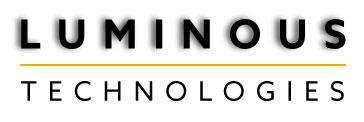THE CONCEPT OF USING AN OPTICALLY ACTIVE ADDITIVE
The Practical
- Addition of an optically active additive to a coating will make the coating reactive to specialised ultra violet light. This reaction can be tuned to specific wave-lengths (colours in the visible spectrum)
- When the coating is applied to a surface the ultra violet light source can be used to monitor the quality of application of the wet film as it is being applied. Currently, OACS inspections are carried out under ‘normal’ application conditions.
- Subsequently, inspection of the dry film is made easier and faster by the use of the ultra violet light and the image can be recorded digitally for reporting purposes and future reference
- The same procedure can be used to monitor coating removal and hence the effectiveness of surface preparation techniques.
Water Ballast tanks for the shipyard
The shipyard usually has most problems in coating these spaces because of:
- Poor access
- Large area
- The need to walk on the coated surface (drying time)
- Complex geometry
- High level of inspection, taking up to 14% of the time
- Problems of both over and under application
Water Ballast Tanks for the Ship owner
Once in service the owner is faced with:
- Regular inspections by untrained crew and routine maintenance
- The need to pass records back to the office
- Regular inspections by Classification Societies to ensure coating performance.
- Very high costs of refurbishment in the event of failure
Water Ballast Tanks for Classification Soc.
- Inspectors are already very busy during their normal surveys of the hull and the machinery space.
- They have little time for coating surveys
- The method adopted by Class. (poor, fair, good) is very subjective and will lead to problems.
- If a tank is inspected near the entrance a higher degree of failure will be detected than by full survey.
- Need to keep proper records of the coating performance to be able to check and maintain vessel records (ABS -Safe net).
Costs and Benefits
- For a VLCC with an area of some 250,000sqm it can economically unjustifiable to refurbish the ballast tanks given the current freight rates. Improved coating performance will increase the effective working life of a vessel.
- Paying more for an enhanced product at new building can be justified.
- Reduce number of Stripecoats
- Reduced inspection time will improve productivity.
The Method
- The surface to be coated is cleaned and inspected in the normal manner.
- The first coat containing the optically active additive is applied using a suitable UV light to monitor application when wet. Missed areas can be ‘repaired’at this stage.
- Once dry, the first coat is inspected using the same UV lighting, probably in conjunction with existing techniques initially.
- Any areas of under application are readily identified and remedial work carried out as appropriate.
- The second coat containing no optically added additive is applied and the inspection process repeated.
The Results
- At the inspection of the first coat, areas of under thickness ordefects will show up as “black”spots or areas of decreased glow under the UV light.
- Areas of high DFT are brighter than areas of low DFT
- At the inspection of the second coat, areas that are holidays will show the original first coat through the second coat. Any other film defects will be similarly picked up.
- Through life of the vessel, coating degradation can be easily and quickly monitored and captured digitally to record the system performance.
Potential Benefits for the shipyard
- Reduced inspection time, helping de-bottleneck paint cells
- Better first time application, reducing re-work
- Improved DFT control (max, min and on edges)
- Proof of edge coverage (potential to reduce stripe coating)
- Better record keeping
- Potential to use less paint volume (reduced VOC emission)
- Improved productivity through development of single coat systems
Benefits for the Ship owner
- Improved quality of first time application
- Improved through life performance hence reduced operating costs
- Easier through life inspection and record keeping (also for classification societies)
- Easier to detect failures early, potentially reducing M&R costs
Crack Detection
- During inspection any cracking will appear as a bright line or as a different coloured line where the original optically active primer coat is exposed.
- Where the crack exposes the substrate the optically active coating will form a halo around a black area. The black area being the substrate which will not react to the UV light.
- Through life of the vessel, coating degradation can be easily and quickly monitored and captured digitally to record the system performance.
Other possible applications
- Any coating system, where long term performance is essential or desired.
- As system is optical the nature of the substrate does not interfere with the effect. Substrate does not need to be conductive or magnetic. Can be used on concrete, GRP, etc.
- Included in shop primer to enable monitoring of its subsequent removal after surface preparation.
- Indicator of Anti-fouling wear
- To ensure complete coverage of any Sealer over TBT
© 2015 Luminous Technologies, the home of luminous pigments, pastes and optically active additives
Web design: MCA Consultancy

